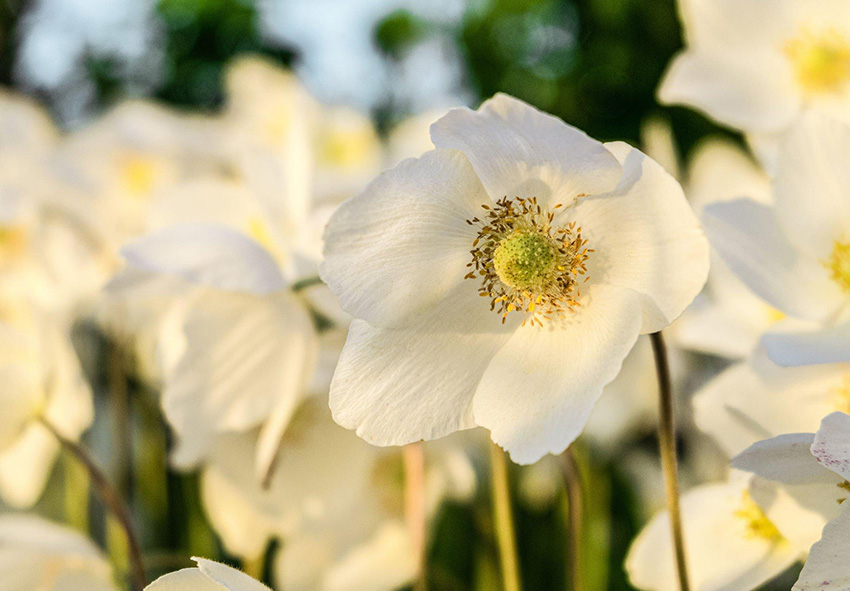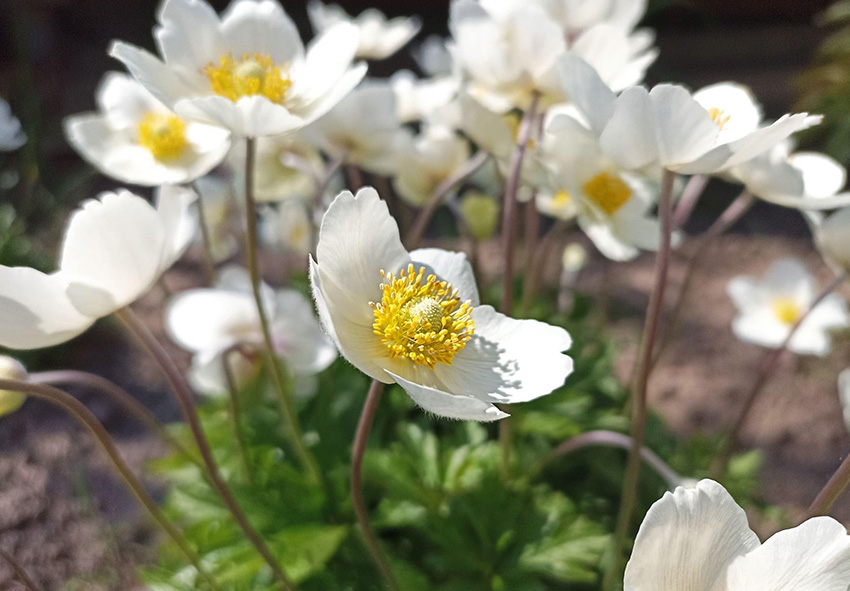Welcome to our comprehensive guide on planting wind flower anemones! If you’re looking to add a touch of elegance and charm to your home interior or garden, these exquisite flowers are a perfect choice. In this article, we will provide you with useful tips on understanding wind flower anemones, selecting the ideal planting location, preparing the soil, planting the flowers, and essential care practices for their growth and blooming. So, let’s dive in and discover the beauty of wind flower anemones!
Wind Flower Anemones: Tips for Planting and Care
Are you looking to add a splash of color to your garden or outdoor space with minimal effort? Look no further than wind flower anemones! These beautiful flowers are a popular choice among gardeners and homeowners for their vibrant colors and low-maintenance care. In this article, we’ll provide you with tips on how to plant and care for wind flower anemones, so you can enjoy their beauty year after year.
Understanding Wind Flower Anemones

Wind flower anemones, also known as anemone blanda, are small, bulbous plants that are native to the Mediterranean region. These plants typically bloom in early spring, producing cup-shaped flowers in a range of colors from deep blue to pink and white. Wind flower anemones prefer cooler temperatures and partial shade, making them an ideal choice for gardens in temperate climates.
Wind flower anemones are known for their delicate appearance, with slender stems and dainty flowers. While they may appear fragile, these plants are actually quite hardy and can survive in a variety of conditions. They are also resistant to pests and disease, making them a low-maintenance choice for any garden or outdoor space.
Selecting the Ideal Planting Location
When selecting a location to plant your wind flower anemones, it is important to choose an area that receives partial shade and is protected from strong winds. These plants prefer well-draining soil that is rich in organic matter, such as compost or peat moss. Avoid planting in areas that receive full sun or are prone to waterlogging, as this can cause the bulbs to rot.
It’s also important to consider the aesthetic of your garden or outdoor space when selecting a location for your wind flower anemones. These plants look beautiful when planted in clusters or drifts, creating a colorful and eye-catching display. Consider planting them alongside other spring-blooming plants, such as tulips or daffodils, for a stunning and coordinated look.
Preparing the Soil for Planting
Before planting your wind flower anemones, it is important to prepare the soil properly. Start by removing any weeds or debris from the planting area, then loosen the soil with a garden fork or tiller. Mix in a generous amount of compost or peat moss to improve soil quality and provide essential nutrients for the bulbs.
If your soil is heavy or clay-like, consider adding sand or perlite to improve drainage. Wind flower anemones prefer soil that is moist but not waterlogged, so proper drainage is essential to their survival.
Planting Wind Flower Anemones

To plant wind flower anemones, dig a hole that is approximately two to three times the diameter of the bulb and twice as deep as the bulb’s height.
- Place the bulb in the hole with the pointed end facing up, then cover it with soil.
- Water the area thoroughly to help settle the soil and promote root growth.
- When planting multiple bulbs, space them approximately 4-6 inches apart to allow for proper growth and prevent overcrowding.
Consider planting them in clusters or drifts for a more natural and visually appealing display.
Essential Care Practices for Wind Flower Anemones
Wind flower anemones require minimal care once planted. However, it is important to water them regularly during the growing season, especially during hot, dry weather. Avoid overwatering, as this can cause the bulbs to rot. Additionally, it is important to fertilize the plants once a year with a balanced fertilizer to provide essential nutrients.
Deadheading spent flowers and removing any yellowing or damaged foliage is also important to promote healthy growth and encourage the plant to produce more flowers. Additionally, it is important to avoid disturbing the bulbs during their dormant period, as this can cause them to become stressed and reduce blooming.
Supporting Anemone Growth and Blooming

To ensure that your wind flower anemones continue to bloom year after year, there are a few additional steps you can take to support their growth and blooming. Consider applying a layer of mulch around the base of the plants to help retain moisture and regulate soil temperature. This can also help to prevent weed growth and protect the bulbs from extreme temperatures.
If you live in an area with harsh winters, consider covering your wind flower anemones with a layer of straw or leaves to protect them from frost damage. In the spring, remove the covering and allow the plants to emerge naturally.
Conclusion
Wind flower anemones are a beautiful and versatile addition to any garden or outdoor space. By following the tips outlined in this article, you can ensure that your anemones thrive and produce vibrant blooms year after year. Remember to choose a location that receives partial shade, prepare the soil properly, and provide essential care practices such as regular watering and fertilization. With a little bit of effort, you can enjoy the beauty of wind flower anemones in your home or garden for years to come.
Frequently Asked Questions (FAQs) about Anemones
1. What are Wind Flower Anemones, and why are they so popular among gardeners?
Wind Flower Anemones, scientifically known as Anemone coronaria, are enchanting flowering plants known for their vibrant and delicate blossoms. They have gained immense popularity among gardeners due to their striking beauty, wide color range, and versatility in garden design. These anemones bloom in early spring, adding a burst of color to gardens and attracting pollinators. Their captivating charm and adaptability make them a must-have for any garden enthusiast.
2. Where and how should I plant Wind Flower Anemones in my garden?
To unleash the elegance of Wind Flower Anemones, choose a well-draining, sunny location in your garden. Plant the bulbs about 2-3 inches deep and space them 2-3 inches apart. These plants thrive in rich, loamy soil, so consider amending your soil with organic matter to enhance its fertility. Regular watering during the growing season is essential, but be cautious not to overwater, as they dislike soggy conditions. Wind Flower Anemones can also be grown in containers or as cut flowers for stunning indoor arrangements.
3. Can I order Holland Wind Flower Anemones from your online store?
Yes, you can! Our online store offers a wide selection of Wind Flower Anemone bulbs in various colors, making it easy for you to add these elegant beauties to your garden. We source our bulbs from reputable growers to ensure you receive high-quality specimens. Simply browse our online catalog, select your preferred varieties, and follow the easy ordering process. We’ll ship the bulbs right to your doorstep, so you can embark on your journey of planting and nurturing these exquisite flowers.
4. When is the best time to plant Wind Flower Anemones?
For most regions, the ideal time to plant Wind Flower Anemone bulbs is in the fall, about 4-6 weeks before the first expected frost. This allows them to establish strong root systems during the cooler months and bloom beautifully in spring. However, in warmer climates, you can plant them in late winter or early spring. Be sure to check your local climate and planting recommendations for the most accurate timing.
5. How do I care for Wind Flower Anemones once they're established?
Wind Flower Anemones are relatively low-maintenance once established. Provide consistent moisture during their growing season, but reduce watering after flowering to prevent rot. Deadhead blooms to encourage additional flowering and remove any diseased or damaged foliage. Applying a balanced, slow-release fertilizer in early spring can help promote healthy growth. As they go dormant in summer, allow the foliage to wither naturally, and consider marking their location to avoid disturbing the bulbs. With proper care, these plants will return each spring to grace your garden with their elegance.
Published: 31.05.2023
